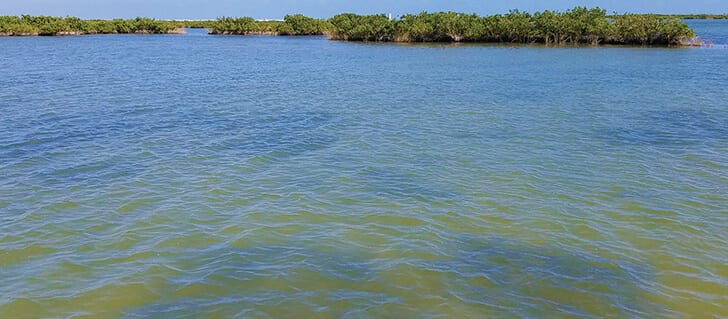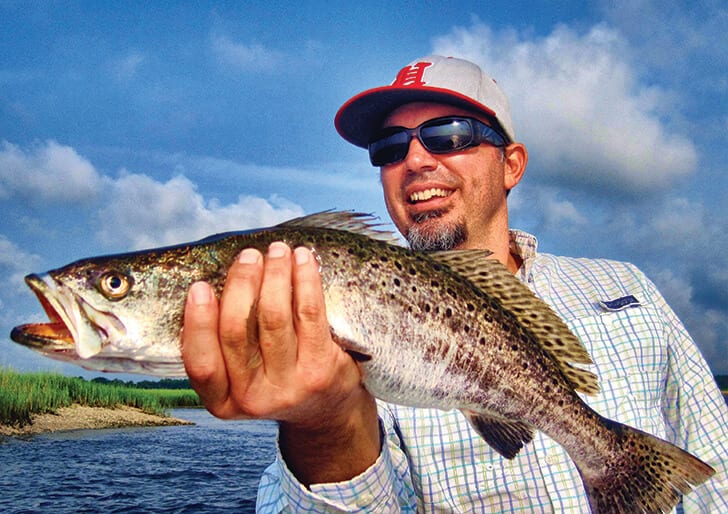
In early November, my buddy and I set out to fish some shallow flats in our kayaks. The water and air temperatures were near the 80-degree mark in south Texas. The area we had available to us only had a few inches of tidal flow predicted. When saltwater fishing, current is at the top of the list for catching requirements, but when the tide doesn’t provide it, find something that will.
I had not fished this area in three years, and since that time hurricane Harvey changed a few things from the vehicle access point to my favorite hole, which isn’t a hole anymore. Needless to say, this was going to be a scouting mission as well as a fishing trip. We made our way to our first stop, which was a large knee- to waist-deep grass flat with a deep channel running down one side that is separated by a few spoil islands. We anchored up at the tip of a spoil island and casted to the channel. Although there was an abundance of bait, we didn’t get a strike.

Off to plan B, my old honey hole. Once there, I realized the sweet spot was no longer, but we fished the area thoroughly since bait was present. We managed only a few strikes and a couple small trout.
Knowing that the fish were inactive and that the tide was weak, I searched for an area where the wind might help drive a little more water flow to get the fish feeding. We headed back to the vicinity of our first stop, which was a flat the shape of a football field with the wind blowing from one zone end to the other. On the downwind side, there were a few small islands with breaks between them. Due to the wind, these breaks funneled stronger water movement onto a small shallow flat. This flat didn’t have more bait than the other areas, but it did have water movement, which sparked the bite. We spent several hours in this tiny area catching reds and speckled trout.
We used the same lures and presentation as we did earlier in the day. Soft plastic topwater jerk baits in pearl accounted for the more aggressive fish, but they were the smaller ones in this area. All of our larger fish came on slow-sinking paddle shad. Targeting the potholes and letting the lures slowly sink at the edge of the sand-to-grass transition drew the better strikes.
When fishing on less than desirable tides, remember to seek out locations that can offer it a push. Funnels and choke points are always a good bet, even if they are subtle. The water depth was the same on both sides and in between the islands, but it gave that little push the fish needed.
Captain Michael Okruhlik is the inventor of Controlled Descent Lures and the owner of www.MyCoastOutdoors.com.